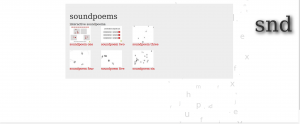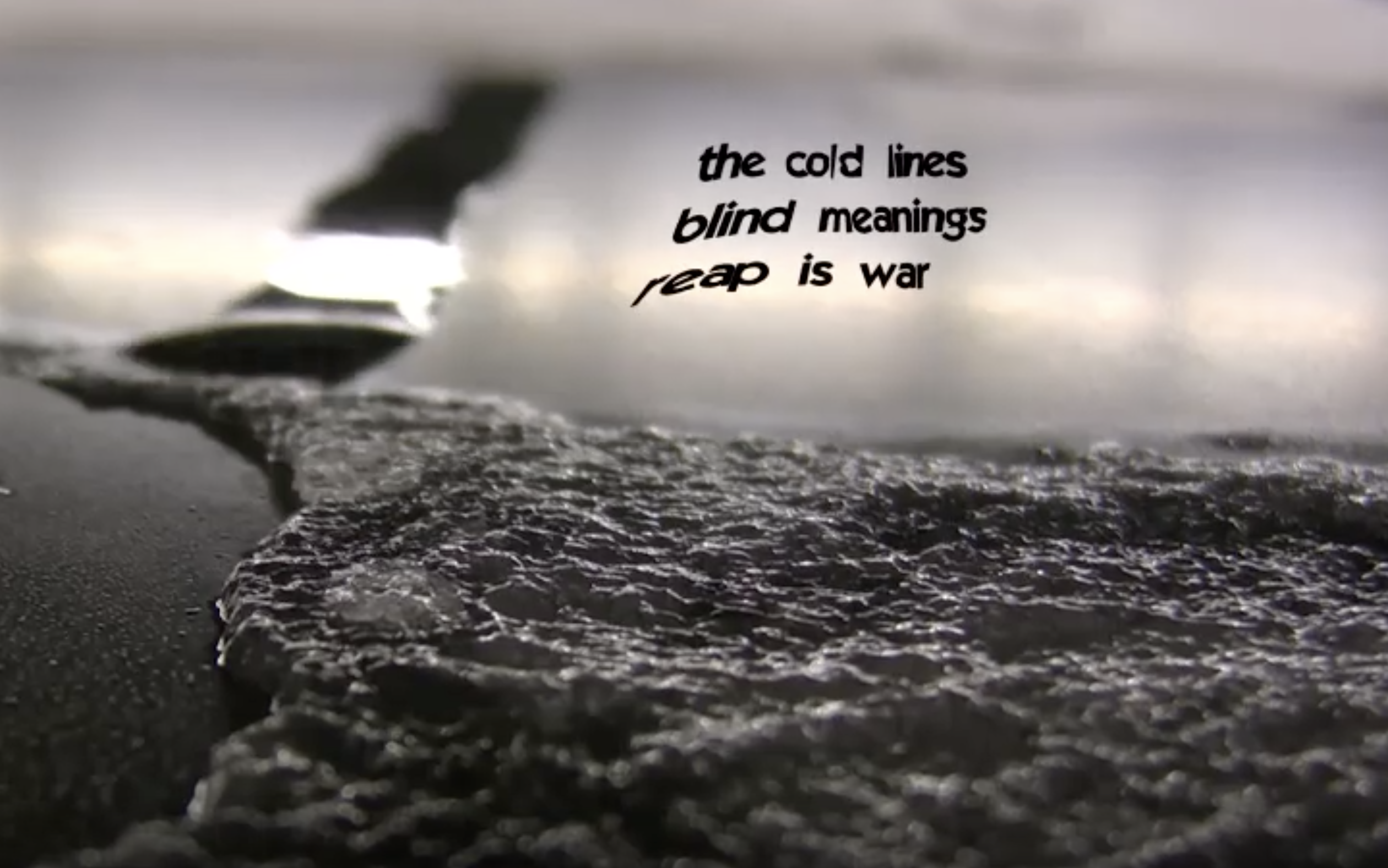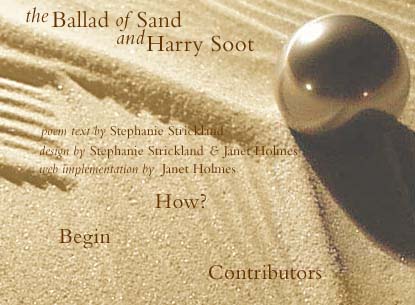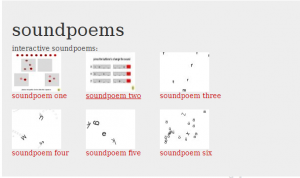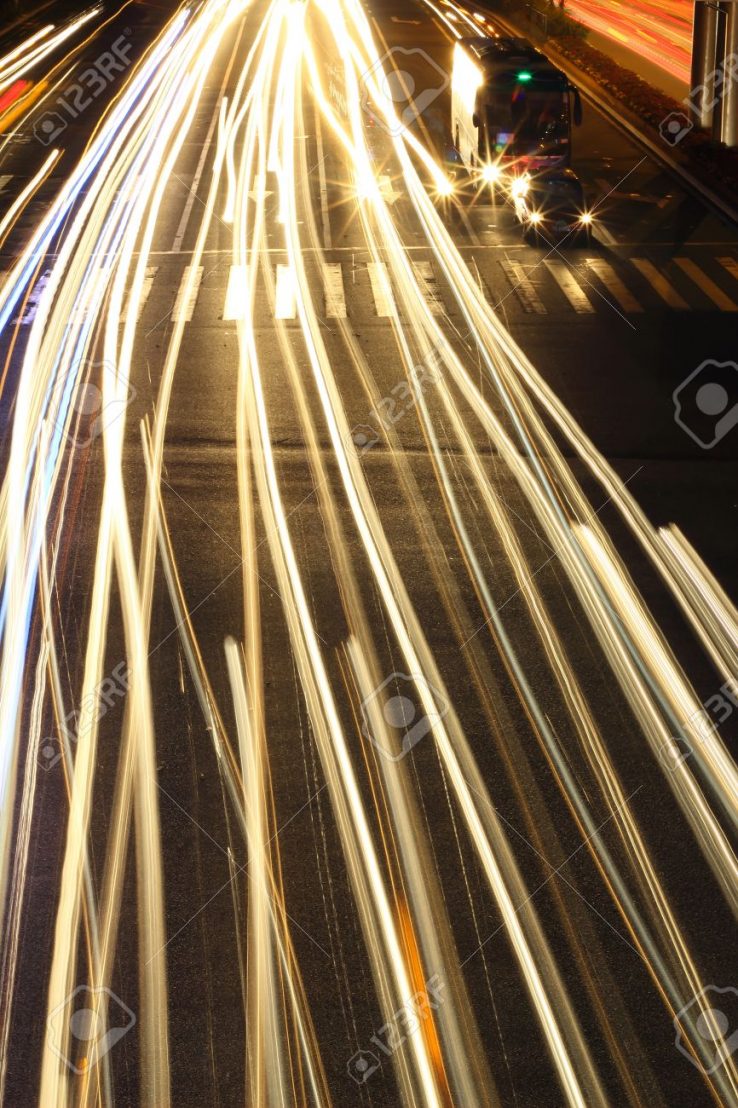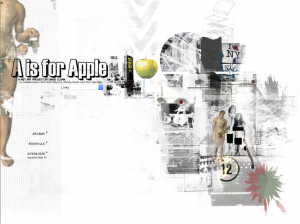
“Shyboy”, unlike the works we have read thus far, is linear. In addition to being displayed in a linear format, it is very much visual poetry in that the lines and text itself will appear, disappear, and shift based on what is being said in the poem at any given point. All in all, it is a short piece. The way it was designed visually is simplistic and effective, in no way detracting from the poem itself and instead adding to it. One of the best examples of this, in my opinion, is right at the beginning when the text appears line by line going down the page and then when it gets to the bottom, it says,
he can’t help it. And he can’t help that
he’s easy to read, even from this end of the hall.
You know what he wants to do?
Vanish
Then that word ‘vanish’ actually does, it slowly fades away.
“Rain on the Sea” is also a very visual piece but compared to “Shyboy” with its ease, fading and guiding the lines and text, “Rain on the Sea” is very flashy and in your face. Additionally, rather than being that of a flash work, “Rain on the Sea” is in fact a video which creates a linear path so that there is only one way to read through the work. Granted that is dependent on whether you can keep up with it. Sometimes the words flash by too quickly that I found myself clicking back or pausing the video just to read it.
It is interesting to note how there are multiple parts to the work. Additionally, the premise of the poem itself is rather unfortunate for you as the individual becoming the person in the piece. Within the first minute alone you are tossed into a situation where you are dying on the bathroom floor and yet suddenly ‘given another chance,’ in a sense, by an almighty power:
Too late for that, you said–your last mistake, for it turns out there is indeed a God, quite powerful, quite knowing, not amused. He pardoned the last stages of your tortured marriage. He granted you it was perversely entertaining, mere child’s play in your world of murderers.
The words themselves are quite intense when given a chance to read them, though the format they are displayed in with the quick flashes as they fly by on the screen do also provide that sense of severity.
The video itself feels almost as if one is trying to download the data off of the screen, processing it as it goes. It is stiff and mechanical and the only way to really read it is to pause and slow down and take the time to go through each and every word within the different parts.
Sources:
“Shyboy” by Tom Swiss
“Rain on the Sea” by Y0UNG-HAE CHANG HEAVY INDUSTRIES

